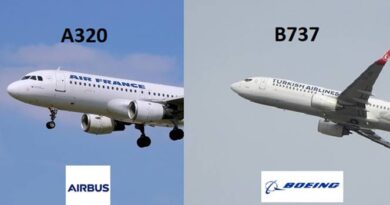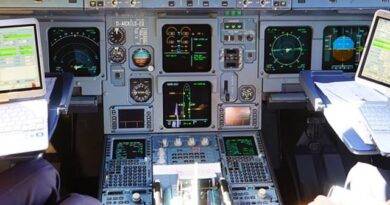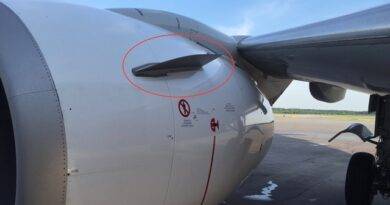Are Power Lines Dangerous for Helicopter Flights? Safety Precautions and Notable Incidents
Helicopter flights offer unmatched versatility in various fields, from emergency services to aerial inspections. However, one of the significant hazards these aircraft face is the presence of power lines. Power lines pose a serious risk to helicopter flights due to their height, often difficult-to-spot structure, and high-voltage transmission. This article explores the dangers of power lines for helicopter operations, the essential safety precautions pilots must follow, and some notable examples of related accidents. We will also provide additional resources for further reading on this subject. Are Power Lines Dangerous for Helicopter Flights? Safety Precautions and Notable Incidents…
Why Are Power Lines Dangerous for Helicopter Flights?
Power lines present a unique challenge to helicopter pilots due to several factors:
- Visibility Issues: Power lines can be difficult to see, especially in low visibility conditions like fog, rain, or poor lighting. Their thin wires blend into natural backgrounds, making them hard to spot.
- Low Altitude Operations: Helicopters frequently operate at low altitudes for missions like search and rescue, aerial photography, and surveying. This puts them at a higher risk of colliding with power lines, which are typically suspended between 40 and 200 feet above the ground.
- Electrocution Hazard: Colliding with power lines carries the risk of electrocution. High-voltage lines can cause severe damage to helicopters, leading to loss of control and, in many cases, catastrophic failures.
- Wire Strikes: When a helicopter strikes a wire, the results can be devastating. The rotors or airframe may become entangled, resulting in a crash. Even a minor contact with power lines can result in substantial damage due to the helicopter’s momentum and the tension of the wires.
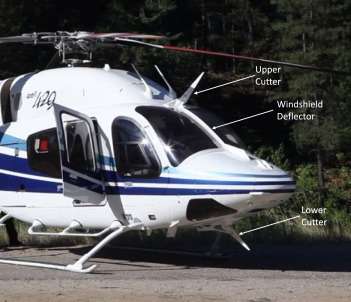
image source
Essential Safety Precautions for Helicopter Flights Near Power Lines
To mitigate the risks associated with flying near power lines, pilots and operators should adopt several critical safety measures:
- Pre-Flight Planning: Detailed planning is crucial for any flight near power lines. Pilots should review maps and charts for power line locations and conduct thorough visual inspections before takeoff. Modern maps often include information on the location of power lines, helping pilots plan safe routes.
- Wire Strike Protection Systems (WSPS): Many helicopters are equipped with WSPS, designed to cut wires upon impact, minimizing the risk of the wires entangling the aircraft. These systems can significantly reduce the damage from an unintended collision with power lines.
- Use of Enhanced Vision Systems: Technologies such as radar altimeters and infrared cameras can help pilots detect obstacles, including power lines, even in low visibility. Enhanced vision systems can provide critical information to pilots when flying in challenging conditions.
- Visual Markers on Power Lines: Utilities often use visual markers like colored balls or lights on power lines, especially those crossing rivers or highways, to make them more visible to pilots. These markers can serve as a visual warning for helicopters approaching the area.
- Pilot Training: Training for helicopter pilots should include wire strike awareness programs. This training emphasizes the risks associated with power lines and teaches pilots how to detect and avoid them. Simulated scenarios can help prepare pilots for real-world conditions.
- Adherence to Flight Guidelines: Staying above the minimum safe altitude whenever possible and adhering to flight corridors designed to avoid power lines are essential practices. Following these guidelines helps reduce the likelihood of encountering power lines unexpectedly.
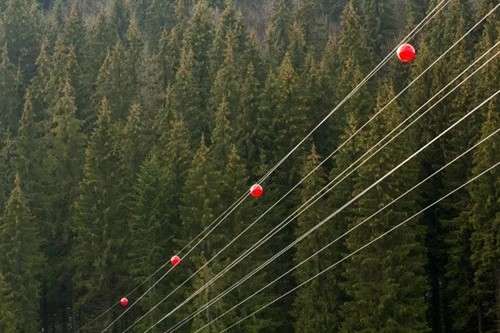
image source
Examples of Helicopter Accidents Involving Power Lines
Unfortunately, the dangers of power lines have been realized in numerous helicopter accidents. Here are some notable examples:
- Valencia, Spain, 2024: On September 29, 2024, a Bell 206B JetRanger III helicopter crashed into high-voltage power lines in the Monte Picayo area near Puçol, Valencia. The helicopter, operated by Bigas Grup for power line inspection work, struck the wires and subsequently crashed into an orchard, resulting in the deaths of all three onboard. The incident emphasizes the dangers associated with low-altitude flights during power line inspections
(AeroTime, AeroTime, El País). - North Carolina, 2009: During a practice inspection, a Hughes OH-6A helicopter collided with ground wires of a high-tension transmission line. The aircraft was performing low-level maneuvers when it struck the cables, leading to a crash in a nearby field. This event highlights the inherent risks of operating close to power lines, even in controlled practice scenarios (AOPA).
These cases underline the significance of rigorous pre-flight checks, pilot training, and technological support to prevent accidents involving power lines.
Conclusion
Power lines pose a significant threat to helicopter operations due to their visibility challenges, low altitude placement, and the potential for severe damage upon impact. However, with proper safety precautions, advanced technologies, and comprehensive pilot training, many of these risks can be mitigated. Awareness and adherence to best practices are critical for ensuring safe helicopter operations near power lines. By implementing these strategies, pilots can minimize the dangers and safely navigate even the most challenging flight environments.
References and Further Reading
- Federal Aviation Administration (FAA) – Helicopter Safety Guide
https://www.faa.gov/helicopter_safety - National Transportation Safety Board (NTSB) – Accident Database & Synopses
https://www.ntsb.gov - International Helicopter Safety Foundation (IHSF) – Wire Strike Awareness Programs
https://www.ihsf.aero/wire-strike-awareness - European Union Aviation Safety Agency (EASA) – Guidelines for Helicopter Operations
https://www.easa.europa.eu - National Institute for Occupational Safety and Health (NIOSH) – Helicopter Crash Risk Factors
https://www.cdc.gov/niosh/topics/aviation/helicopter.html
